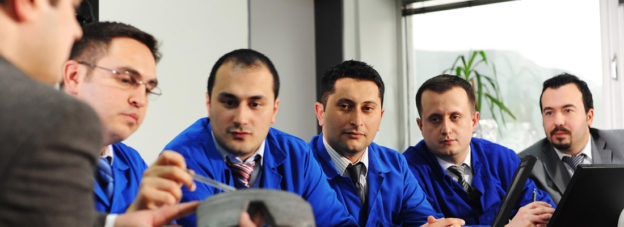In Kim v. Toyota Motor Corp., 6 Cal.5th 21 (Cal. 2018), the Supreme Court of California considered whether the trial court properly allowed the defendant to introduce evidence of industry custom and practice in defense of a strict product liability design defect case. The Supreme Court held that the evidence was relevant and admissible because it was introduced to address the feasibility and cost of alternative product designs, and not to show that the defendant acted reasonably. The court’s holding establishes that, while evidence of industry custom and practice is not admissible to prove or disprove fault in strict liability cases, it is admissible for other purposes, such as analyzing whether a product was defectively designed under the risk-benefit test.
In Kim, the plaintiff, William Jae Kim, was driving his 2005 Toyota Tundra pickup truck downhill when a vehicle coming from the opposite direction swerved into his lane. Mr. Kim attempted to swerve out the way and lost control of the steering wheel. The vehicle ran off the road and down the side of a cliff. Mr. Kim and his wife sued Toyota, alleging a design defect because the truck lacked a vehicle stability control (VSC) mechanism, which the Kims claimed would have stabilized the vehicle and prevented the accident. When Mr. Kim purchased the vehicle, Toyota offered VSC as part of an optional upgrade package. The Kims alleged that VSC should have been made a part of the standard truck design.
California follows the doctrine of strict products liability for design defects cases. In California, a manufacturer may be held strictly liable for injuries caused by its product regardless of whether the manufacturer was negligent in designing the product. One of the two tests employed by California courts to determine if a product is defectively designed is the risk-benefit test, a test that considers whether the risk of danger posed by the design outweighs the benefits of such design. Once the plaintiff demonstrates that the product’s design was the proximate cause of his or her injury, it then becomes the defendant’s burden to establish that the benefits of the design outweigh the risks of danger inherent in the design. There are a series of factors that are considered in this analysis, known as the Barker factors, that include consideration of the mechanical and economic feasibility of alternatives designs.
Prior to trial, the Kims moved to preclude Toyota from introducing evidence of competitors’ vehicles and designs to show that Toyota’s design was equivalent to or better than others in the industry. The trial court denied the plaintiffs’ motion. During trial, both parties attempted to introduce industry custom and practice evidence through testimony about competitors’ use of the VSC technology in standard vehicle designs. Toyota introduced testimony establishing that, in 2005, no other pick-up truck manufacturer provided VSC in its standard truck models. The jury found that the 2005 Toyota Tundra did not have a design defect and the trial court entered a judgment in favor of Toyota. The Kims appealed the decision to the Court of Appeals and then to the California Supreme Court. The California Supreme Court accepted the Kims’ appeal to decide the question of whether evidence of industry custom and practice may be introduced in a strict product liability action based on a purported design defect.
The Supreme Court of California held that “[t]he answer depends on the purpose for which the evidence is offered.” Because strict liability law focuses on the condition of the product, not the manufacturer’s actions, evidence that a manufacturer’s design comports with industry custom and practice is not admissible for the purpose of showing that the manufacturer acted reasonably in adopting the challenged design. The evidence may, however, be relevant and admissible as part of the risk-benefit test to show that the product was as safely designed as it should have been, considering the feasibility and cost of alternative designs. Evidence of industry custom and practice is relevant if it “sheds light on whether, objectively speaking, the product was designed as safely as it should have been, given ‘the complexities of, and trade-offs implicit in, the design process.’”
While the Kim court ruled in favor of the defendant, the court’s holding can be beneficial to subrogation plaintiffs in product liability cases. The Kim case establishes that, in California, evidence of industry custom and practice can be introduced by any party as part of the risk-benefit analysis for design defect claims. Such evidence can be useful to a subrogation plaintiff in a design defect case if industry custom and practice supports the conclusion that the product in question lacked safer alternative designs used by competitors in the industry. Although evidence of industry custom and practice cannot be used to establish a manufacturer’s unreasonableness or deviation from a standard of care, it can be used to establish a design defect with the product itself.

